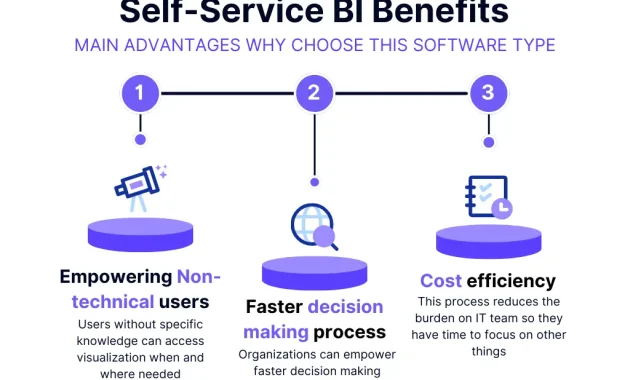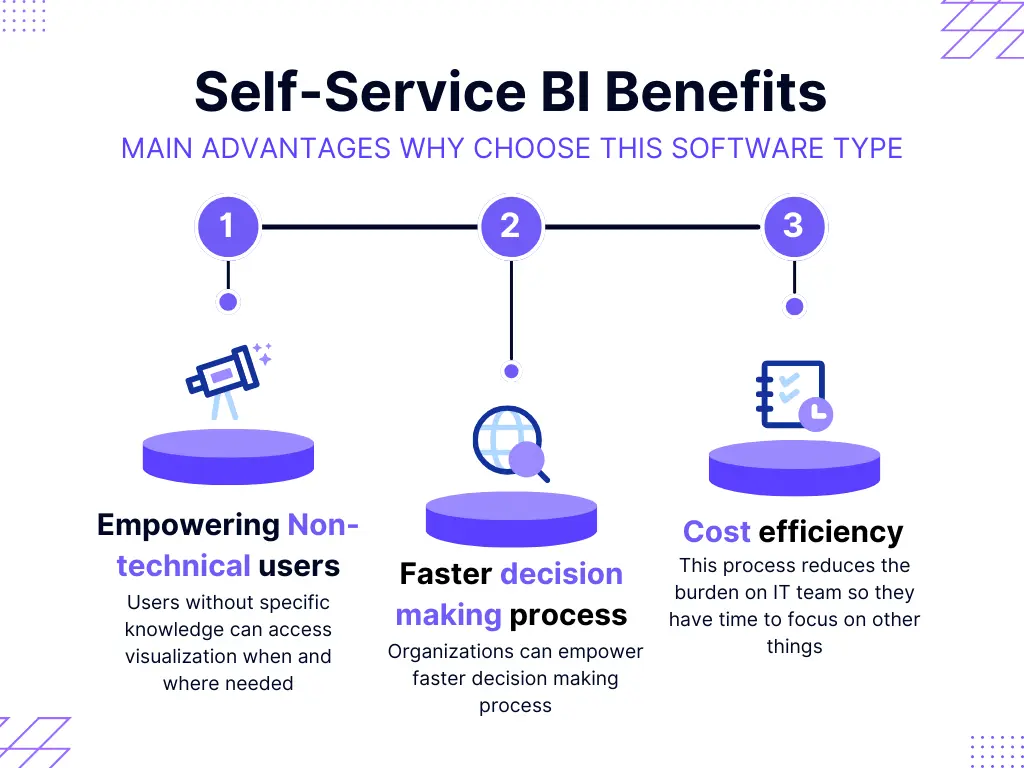
Unlocking Data: How Self-Service Business Intelligence Software Empowers Non-Tech Teams
In today’s data-driven world, the ability to understand and utilize information is paramount. However, for many businesses, the promise of data insights remains elusive. The chasm between raw data and actionable intelligence is often bridged by technical expertise. This dependence on specialized skills can create bottlenecks, slow down decision-making, and leave non-technical teams feeling disconnected from the data that drives their work. The solution? Self-service business intelligence software. This article delves into how these tools are revolutionizing the way non-tech teams access, analyze, and leverage data, ultimately empowering them to make more informed decisions.
The Data Bottleneck: Challenges for Non-Technical Teams
Traditional business intelligence (BI) approaches often involve complex processes. Data extraction, transformation, and loading (ETL) pipelines, complex data models, and specialized reporting tools require dedicated IT or data science professionals. This creates several challenges for non-technical teams:
- Dependency on IT: Requests for data analysis and reporting often go through IT departments. This can lead to delays, as IT teams are often overloaded with other priorities.
- Communication Barriers: Technical jargon and complex data models can create communication challenges. Non-technical users may struggle to articulate their needs effectively, leading to misunderstandings and inaccurate analyses.
- Lack of Agility: The lengthy turnaround times associated with traditional BI processes hinder agility. Teams may miss crucial opportunities due to delays in accessing and analyzing data.
- Limited Data Literacy: Without direct access to data and the ability to explore it independently, non-technical users may struggle to develop their data literacy skills.
These challenges highlight the need for a more accessible and user-friendly approach to data analysis. This is where self-service business intelligence software comes into play.
Introducing Self-Service Business Intelligence Software
Self-service business intelligence software empowers business users to analyze data without relying on IT or data scientists. These tools typically offer a user-friendly interface, intuitive data visualization capabilities, and pre-built connectors to various data sources. They democratize data access, enabling non-technical teams to explore data, create reports, and generate insights independently. This shift in power is transforming how businesses operate.
Key features of self-service business intelligence software often include:
- Drag-and-Drop Interface: Intuitive interfaces allow users to easily connect to data sources, create visualizations, and build dashboards.
- Pre-built Connectors: Seamless integration with popular data sources, such as databases, cloud services, and spreadsheets.
- Data Visualization Tools: A wide range of charts, graphs, and maps to effectively communicate data insights.
- Data Preparation Capabilities: Features for cleaning, transforming, and shaping data without requiring coding skills.
- Collaboration Features: Tools for sharing reports, dashboards, and insights with team members.
- Mobile Access: The ability to access and analyze data on mobile devices.
Benefits for Non-Tech Teams
The advantages of using self-service business intelligence software for non-technical teams are numerous and far-reaching. These benefits translate into improved efficiency, better decision-making, and increased business value.
- Faster Insights: Non-technical teams can access and analyze data much faster than with traditional BI approaches. This allows for quicker identification of trends, opportunities, and risks.
- Improved Decision-Making: With readily available data insights, teams can make more informed decisions, leading to better outcomes.
- Increased Productivity: Eliminating the need to rely on IT for data analysis frees up valuable time for non-technical teams to focus on their core responsibilities.
- Enhanced Data Literacy: Direct access to data and the ability to explore it independently helps non-technical users develop their data literacy skills.
- Greater Collaboration: Self-service business intelligence software often includes collaboration features that enable teams to share insights and work together more effectively.
- Reduced Costs: By empowering non-technical teams to perform their own data analysis, businesses can reduce their reliance on costly IT resources.
Choosing the Right Self-Service BI Software
Selecting the right self-service business intelligence software requires careful consideration. There are many options available, each with its own strengths and weaknesses. Here are some key factors to consider when making your choice:
- Ease of Use: The software should have an intuitive interface and require minimal training. Look for a drag-and-drop interface and easy-to-understand data visualization tools.
- Data Connectivity: Ensure the software can connect to your existing data sources, including databases, cloud services, and spreadsheets.
- Data Visualization Capabilities: The software should offer a wide range of chart types, graphs, and maps to effectively communicate data insights.
- Data Preparation Features: Look for features that allow you to clean, transform, and shape your data without requiring coding skills.
- Collaboration Features: Choose software that includes collaboration features, such as the ability to share reports, dashboards, and insights with team members.
- Scalability: The software should be able to handle your current data volume and scale as your business grows.
- Cost: Consider the pricing model and ensure it aligns with your budget.
- Security: Prioritize software with robust security features to protect your data.
- Customer Support: Choose a vendor that offers excellent customer support.
Real-World Applications of Self-Service BI
Self-service business intelligence software is being used across various industries and departments to drive better decision-making. Here are some examples:
- Marketing: Marketers can use self-service business intelligence software to track campaign performance, analyze customer behavior, and identify opportunities for growth.
- Sales: Sales teams can use the software to track sales performance, identify top-performing products, and forecast future sales.
- Finance: Finance teams can use the software to analyze financial performance, track expenses, and identify areas for cost savings.
- Human Resources: HR departments can use the software to track employee performance, analyze employee turnover, and identify areas for improvement.
- Operations: Operations teams can use the software to track key performance indicators (KPIs), identify bottlenecks, and optimize processes.
These examples demonstrate the versatility of self-service business intelligence software and its ability to empower teams across the entire organization.
The Future of Data Analysis
The trend towards self-service business intelligence software is expected to continue. As businesses generate more data than ever before, the need for accessible and user-friendly tools will only increase. The focus will be on empowering non-technical users to unlock the value of their data. The future of data analysis is one of greater accessibility, collaboration, and faster insights. This will lead to better decisions and improved business outcomes.
Conclusion: Embracing the Data Revolution
Self-service business intelligence software is no longer a luxury. It is a necessity for businesses that want to thrive in today’s data-driven world. By empowering non-technical teams to access, analyze, and leverage data, these tools are transforming how businesses operate. The ability to quickly gain insights, make informed decisions, and drive innovation is now within reach for all. Embrace the data revolution and unlock the power of your data with self-service business intelligence software. The benefits are clear, and the future is bright for those who embrace this powerful technology. Consider the implementation of self-service business intelligence software to give your team the insights they need.
[See also: Data Visualization Best Practices]
[See also: Choosing the Right BI Tool]
[See also: Data Governance in a Self-Service Environment]

